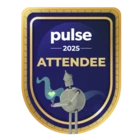These are the core tenets that I’ve picked up about how to measure the effectiveness of a CS Ops team. How do you measure your CS Ops team’s success?
Team Throughput
It starts with tracking simple CS Ops activity. You can use some metric like features deployed. Since a large portion of our CS Ops team uses sprints, we can show "points delivered".
Leading Indicators of Impact
You’ll then want to start to collect signs that your CS Ops team is actually starting to make a difference. For example,
Lagging Outcomes
CS Ops is essentially targeted at improving 4 things:
- CS efficiency (account ratios)
- Retention rate (GRR)
- Expansion rate (NRR),
- Advocacy (new logo $$$ influenced)
- Every CS Ops team has different focuses, and a given team's focus will change over time, depending on the company's strategic priorities. For example, if you acquire a new company, “CS efficiency” could jump from being last priority to first, in a heartbeat.
The best way I've heard to measure lagging outcomes is by comparing cohorts against each other. Keeping with the example of before, if you embarked on new CSM onboarding improvements because you felt like that was the biggest reason that your retention was struggling, then you can track the retention rate of customers owned by the CSMs who went through that program, versus the CSMs who did not. Or, in the case of my own work on community-building (since I sit within our broader CS Ops team), I’m working to pull together data on retention, expansion, and so on of customers who engage in our community, versus those who don’t.



